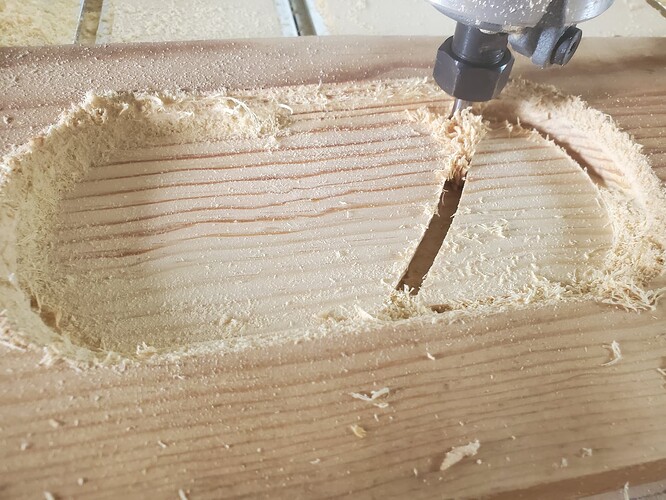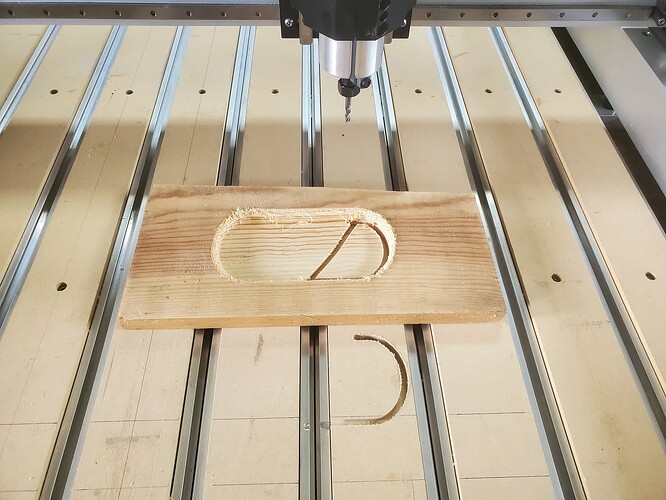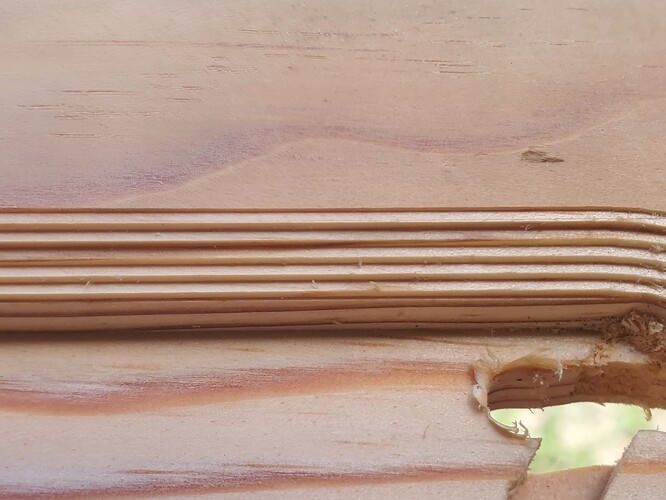Good afternoon,
Okay, what would cause CC Pro/CM to skip code? I’m a little irritated and I don’t know why this is happening.
I’m getting the cart before the horse…
Let me start from the beginning. I haven’t used my machine in probably 1½ to 2 months, simply because life has gotten in the way lately. I needed to cut and create something…anything. before beginning the cut, all the rails were wiped down with Vactra Oil #2.
I chose a simple tray with a little cat design in the bottom of it. I chose a scrap piece of ¾" pine board sufficiently big enough for the project. (I will attach some photos now and the g-code, NC file later once I get on my computer).
Anyway, I chose a #201 bit for rough stock removal, and I took the tool speeds/feeds for hardwood. (Yes, I know it would cut slower, longer, and not as aggressively, but that was my choice. Time was not an issue, a successful completion was!
The project started, it made 6 clearing passes, perfect. This is where things started to go sideways. The seventh pass started, and I have no idea, but instead of cutting the 1/16th of an inch (actually I think it is more like 2mm), it started cutting ¼" deep! Shame on me, I should of paused it right at that point as I knew it wasn’t supposed to be cutting that deep in one pass… the next pass, it plunged through the bottom, through the wasteboard, and probably 1/16" into the aluminum T-slot! Within a few seconds I was able to hit the emergency off button. But man!!
I’m just confused and frustrated as to why this happens. It is the story of my life right now.
I only understand the bare basics of reading G-code, so I’m not sure at what line things went awry. When looking at the simulation in CC and then when looking at the elevations and isometric views in CM, everything looked okay.
I just don’t know.
Thanks for listening to me vent…
Pic #1. The code is to cut the inside oval, then a back and forth clearing cut… working great!
Pic #2 & 3. After 6 correct cycles, then for whatever reason the computer cuts to the depth of about ¼". I was watching, the bit sounded like it was bogging, so I slowed the bit down within CM.
Pic #4 & 5. This is the action it took before I could get to the emergency switch
Pic 6…I see first hand it cuts aluminum well! smh
Pic 7.





